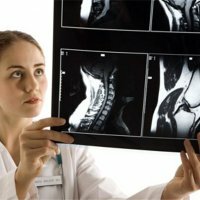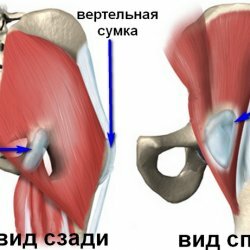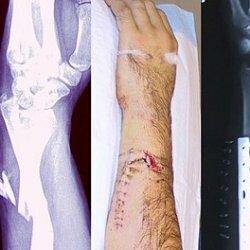Mucinous degeneration of menisci

Among the internal injuries of the knee joint, various meniscus lesions rank first. The degeneration of the meniscus of a mucinous character occurs most often - in 60.5% of cases per 3000 people. Menisci are mostly damaged in athletes and manual workers from 18 to 40 years. In adolescents and children under 14 years of age, meniscus degeneration due to their anatomophysiological characteristics is practically not found. Meniscus damage is more common in men than in women, while the right and left menisci are affected to an equal extent.
Causes of
The cause of mucinous degeneration of the meniscus is usually an indirect trauma, which is accompanied by the rotation of the tibia outward( for the medial meniscus), inward( for the outer meniscus).Also, meniscus damage occurs when the joint is sharply unbent, the leg is pulled and pressed, and less frequently by direct injury( a strong impact of the joint on the wall or the impact of a moving object).
Repeated injury( bruises) sometimes leads to chronic degeneration of the meniscus( meniscopathy) and subsequently to their frequent rupture. Degenerative changes in the meniscus can develop after a chronic microtrauma, revmatrasma, gout, internal intoxication, especially if the patient has to walk or stand a lot.
Symptoms of
Diagnosis of meniscal lesions is difficult due to the presence of symptoms of acute specific inflammation that occur with other joint injuries. Typical is local pain along the joint joint, severe limitation of movement, inability to unbend the knee. Only after the subsidence of the reactive phenomena can the true picture of the damage be revealed. To confirm the damage, various pain tests help. The most informative are the symptoms of extension( Baykov, Roche, Landes), rotational( Steiman-Bragard), mediolateral test and compression symptoms.
Many of the symptoms of meniscus damage are also observed with other diseases of the knee joint. The main diagnostic criterion is a carefully collected history. It is possible to talk about the presence of mucinous degeneration of the meniscus with a high probability if there is a positive Chaklin symptom or a sound phenomenon( roll, click, friction).Great difficulties in diagnosis occur in atypical meniscus forms, chronic trauma, rupture of meniscus ligaments, or damage to both menisci.
Treatment of
In the acute period of meniscus degeneration, treatment is usually conservative. A puncture is performed, joint blockade is eliminated, the limb is fixed with the tire when the position is opened for 14 days. Desensitizing and decongestant physiotherapy, physiotherapy exercises of the hip muscles are also shown. In the presence of a complex unrecoverable blockade, surgery may be required.
For relapses and repeated injuries, surgical treatment is performed. It is important to perform a meniscatectomy not later than 3-4 months after the injury, otherwise there may develop secondary dystrophic changes inside the joint. Recently, the method of imposition of the primary suture of the meniscus in acute or subacute period has spread. Meniscatectomy is performed under local intraosseous anesthesia. A tourniquet is attached to the surface of the thigh. Inspection of the joint is performed in the bent leg position. The damaged part of the meniscus is removed. Complete removal of the meniscus is carried out in the event of a total rupture, when it is crushed or degenerated. After meniscatectomy, the joint is sanitized: foreign bodies are removed, ligaments, articular cartilage and fatty bodies are inspected. Then the joint is washed with an antiseptic and sewed tightly. Antibiotics, as a rule, are not introduced. A pressure bandage is applied, the limb is placed on the Belera bus or an orthopedic pillow.
In the postoperative period, measures are taken to quickly restore the dynamics of the knee joint. Sutures are removed on the 9th day, then massage, exercises in water, muscle electrical stimulation, UHF and magnetotherapy are prescribed. General working capacity can be restored in 4-6 weeks, sports - in 3 months. Long-term results of surgery are usually favorable. Patients, as a rule, can return to their previous work and sports activities. Timely qualified diagnosis and treatment can prevent degenerative dystrophic changes in the joint.



